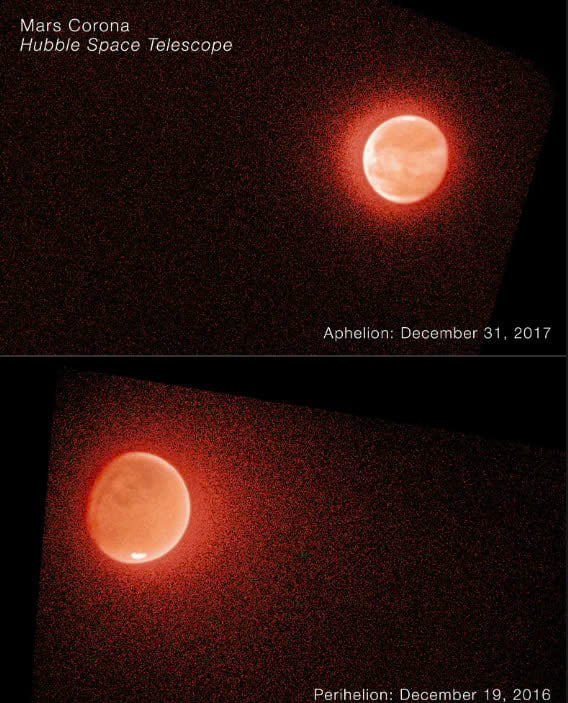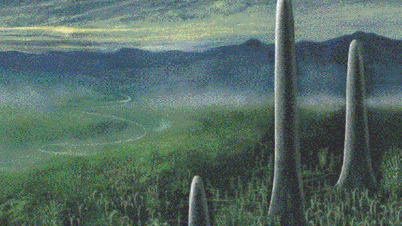Dry riverbeds, deltas and ocean basins prove that there was an abundant water source here until three billion years ago, before it became the desert it is today.
There are two main theories about how the water disappeared: it either went underground or evaporated into space. Two papers, one published in August and the other on September 5, say the answer is both.

Hubble images of Mars at aphelion and perigee. The atmosphere is brighter and more expansive when Mars is closer to the Sun. Photo: NASA
The first study published in the Proceedings of the National Academy of Sciences is based on data from the Mars InSight spacecraft, which landed on Mars in 2018 and will operate until 2022. InSight is equipped with a seismometer, which has measured many quakes on Mars during the spacecraft's four years of operation.
It is determined by the frequency of energy vibrations moving through a moist surface, containing enough water to cover the entire planet Mars in an ocean about a mile deep. So what? Not so simple.
The latest study, published in Science Advances, is based on data from two other NASA space instruments — the Hubble Space Telescope, which has been orbiting Earth since 1990, and the MAVEN orbiter, which has been orbiting Mars since 2014.
Together, the craft have collected data on the Martian atmosphere spanning a decade for MAVEN and 33 years for Hubble. Both are looking at the evaporation of hydrogen and oxygen into space.
The study, led by John Clarke, professor emeritus of astronomy at Boston University's Center for Space Physics, used MAVEN and Hubble observations to track the escape of both types of atoms. This allows the researchers to estimate how much water once covered the planet and evaporated into space.
Based on complex scientific research and analysis, Professor Clarke came to the conclusion: "The water can only go to two places. It can freeze underground or the water molecules can break into atoms and escape from the atmosphere into space."
Ha Trang (according to NYT)
Source: https://www.congluan.vn/nuoc-tren-sao-hoa-da-mat-di-dau-post312212.html











































































































Comment (0)